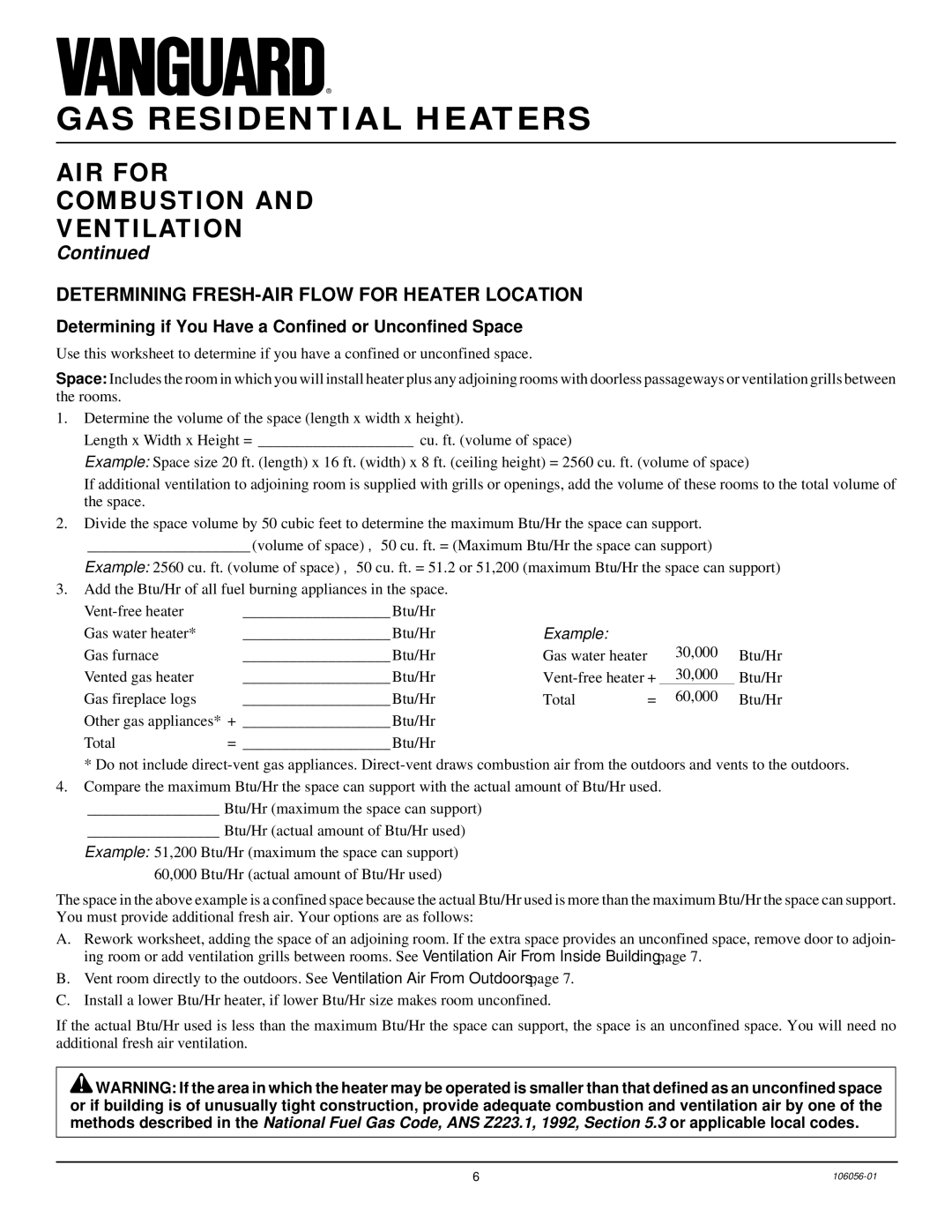VMH3000TPS specifications
The Vanguard Heating VMH3000TPS is a state-of-the-art heating unit designed to provide efficient and reliable warmth for residential and commercial spaces. This model stands out for its exceptional performance, advanced technologies, and user-friendly features that cater to diverse heating needs.One of the main features of the VMH3000TPS is its powerful heating capacity. With a robust output, it can effectively heat large areas, making it suitable for open-plan homes, offices, and industrial spaces. The unit operates quietly, ensuring that users can enjoy a comfortable environment without the disruptive noise often associated with heating systems.
The VMH3000TPS incorporates cutting-edge energy efficiency technologies. It is engineered to consume less energy while delivering optimal performance, which translates into lower utility bills and a reduced carbon footprint. This model features advanced insulation materials that minimize heat loss and allow the unit to maintain a consistent temperature throughout the space.
Another notable characteristic of the VMH3000TPS is its smart control system. Users can easily adjust the temperature settings through a user-friendly digital interface. This includes programmable schedules that enable users to set heating times according to their preferences. Additionally, the unit is compatible with smart home systems, allowing for remote access and control via smartphones or other devices.
Safety is a top priority in the design of the VMH3000TPS. The unit is equipped with multiple safety features such as overheat protection, tip-over switches, and flame failure devices. These ensure that the heater operates safely in all conditions, providing peace of mind to users.
Moreover, the VMH3000TPS is built with durability in mind. Constructed from high-quality materials, it is designed to withstand the rigors of daily use while maintaining aesthetics. The sleek, modern design allows it to blend seamlessly with any décor, making it an attractive addition to any space.
In summary, the Vanguard Heating VMH3000TPS is a high-performance, energy-efficient heating solution that combines advanced technology with user-friendly features. With its powerful output, smart controls, and emphasis on safety and durability, it is an excellent choice for anyone looking to improve their heating system. Whether for home or commercial use, the VMH3000TPS promises to deliver comfort and efficiency throughout the heating season.

